PRESTO PLANS
Sent straight to your inbox
CLICK HERE TO ACCESS
Sign up to receive 10 ready-to-use ELA resources your students will love!
10 FREE ELA RESOURCES

Teaching The Most Dangerous Game by Richard Connell
If you are teaching “The Most Dangerous Game” by Richard Connell, you may be looking for strategies and tips for analyzing this complex plot. Not to fear as I’m sharing my best tips for helping you navigate all elements of the story with your students.
“The Most Dangerous Game,” also sometimes called “The Hounds of Zaroff”, is a short story about a big-game hunter who falls off a boat and ends up washed up on an isolated Caribbean island. It is here where he finds himself in the terrifying scenario of being hunted by a Cossack aristocrat who has a particular interest in hunting humans instead of animals.
So, where to begin when teaching this short story? Below are some tips to bring this story to life for your middle or high school students.
BUILD BACKGROUND INFORMATION
Before introducing any short story to your students, I would suggest providing any context that students may need to fully understand the background of the story. I like to focus on three elements of context where appropriate:
- Author
- Historical
- Genre
Introduce students to Richard Connell with a biographical overview and highlight key moments in his life and career. This gives student a sense of who is telling this story and shows how the author’s life is reflected in the plot line. For example, Connell served in the army war efforts during WWI, and elements of that experience certainly would have played a role in developing his plot.
You’ll also want to spend some time focussing on the historical context of the story. To have a better understanding of the antagonist of “The Most Dangerous Game,” Russian General and Cossack (Zarloff) and his guard, Ivan, ensure that students are given some context of the Russian Revolution and all events that follow. Focus on the history of the Cossacks, Russian history, and how the history permeates the story. You may also want to focus in on the events of World War I (warfare, trenches etc.) to provide students with the right context they need to fully take in the story.
Finally, provide some background information on the genre (adventure and gothic) so that students can keep an eye out for common traits of this genre as they are reading. For example, in gothic fiction, you’ll often find mystery and suspense, dark or frightening atmospheres, and emotional dread/distress. Obviously, these elements are present in this plot.
PRE-READING QUOTES DISCUSSION
Before diving into the story, you can start by having students discuss some quotes pulled from the text in small groups. They must discuss whether they agree or disagree with the statement. This allows them to explore some of the themes or topics of “The Most Dangerous Game” and encourages a friendly debate. Here are a few that have worked well for me:
- “The world is made up of two classes – the hunters and the huntees.”
- “Who cares how [a hunted animal] feels…[they only] understand one thing – fear of pain and fear of death.”
- “Instinct is no match for reason.”
DURING AND POST READING
I have students complete two readings of the text. The first is done as a class with volunteers reading aloud. Then, I have students go through the text and annotate using my model for close reading. Afterwards, students will have a discussion in small groups based on prompts that I provide in an effort to make text to self and text to world connections. Here are a couple that you might consider using:
- What are your thoughts on hunting animals for sport?
- How do you think you would have done during the “game” if you were in Rainsford’s position?
LET’S PLAY A LESS DANGEROUS GAME
I wouldn’t be teaching “The Most Dangerous Game” without having some kind of game for students to play, now would I? That’s why I created a game board that allows students to explore different levels of questions of the text (reading comprehension, vocabulary, and analysis). The game board has different traps related to the story! For example, “You must jump off the cliff into the sea. Move back 4 spaces,” or “Zaroff’s hound falls into your trap. Move ahead one space.” The game is fun, but it’s still rooted in students examining different elements of the text.
MAPPING SHIP TRAP ISLAND
This story is unique in that the setting plays an integral role in the story. In fact, sometimes students find the story challenging because the setting moves quickly. It is important to facilitate a way for students to clarify the setting with text evidence. To do this, you may have them create a map for Ship Trap Island. Have students go back to find key details that describe important settings and translate those descriptions to the visual format of a map.
HUNTING FOR FIGURATIVE LANGUAGE
Connell uses a great deal of figurative language to describe the setting, characters, and plot. Add a twist to exploring these devices by having students “hunt” for figurative language. If they are strong in this area, you could do this by having them explore the text on their own to pull out examples. I focus on metaphor, simile, onomatopoeia, personification, alliteration, and hyperbole. If you are teaching “The Most Dangerous Game” to a group who needs a bit more support, give them quotes to correctly identify the device used.
GUIDED MOST DANGEROUS GAME ANALYSIS
Encourage students to dive a bit more deeply into the text with a guided analysis. To do this, I have students work in small groups and provide them with one question at a time to work together on. You might consider using chart paper in groups and having one spokesperson per group share with the rest of the class. The literary elements / devices to focus on are symbolism, foreshadowing, irony, pun, suspense.
WRITING ZAROFF’S HUNTING LOGS
Have students take on the perspective of General Zaroff! They will write a hunting log from his perspective at different points in the story. This will allow students to step inside the mind of the character and share his thoughts and feelings. They should also attempt to mimic his voice and include specific textual references.
I typically end with showing a film adaptation, and there you have it! While this story is a frightening tale, teaching “The Most Dangerous Game” shouldn’t be too scary with these ideas and resources. If you’d like a ready-to-teach bundle with all the resources mentioned above, you can grab all of my resources by clicking the button below:
Here is what a few teachers who have used these resources already had to say:
- “An awesome resource that I cannot wait to use with my class. This is the next story up in our short story unit! Thank you!” Stefanie K.
-
“LOVE the activities in this! Super fun for my students. Thank you!” – Katie M
Looking for more stories like this? Read this blog post on my favorite spooky stories to teach in middle and high ELA.
Search the blog for what you are teaching
GIVEAWAYS
sent straight to your inbox!
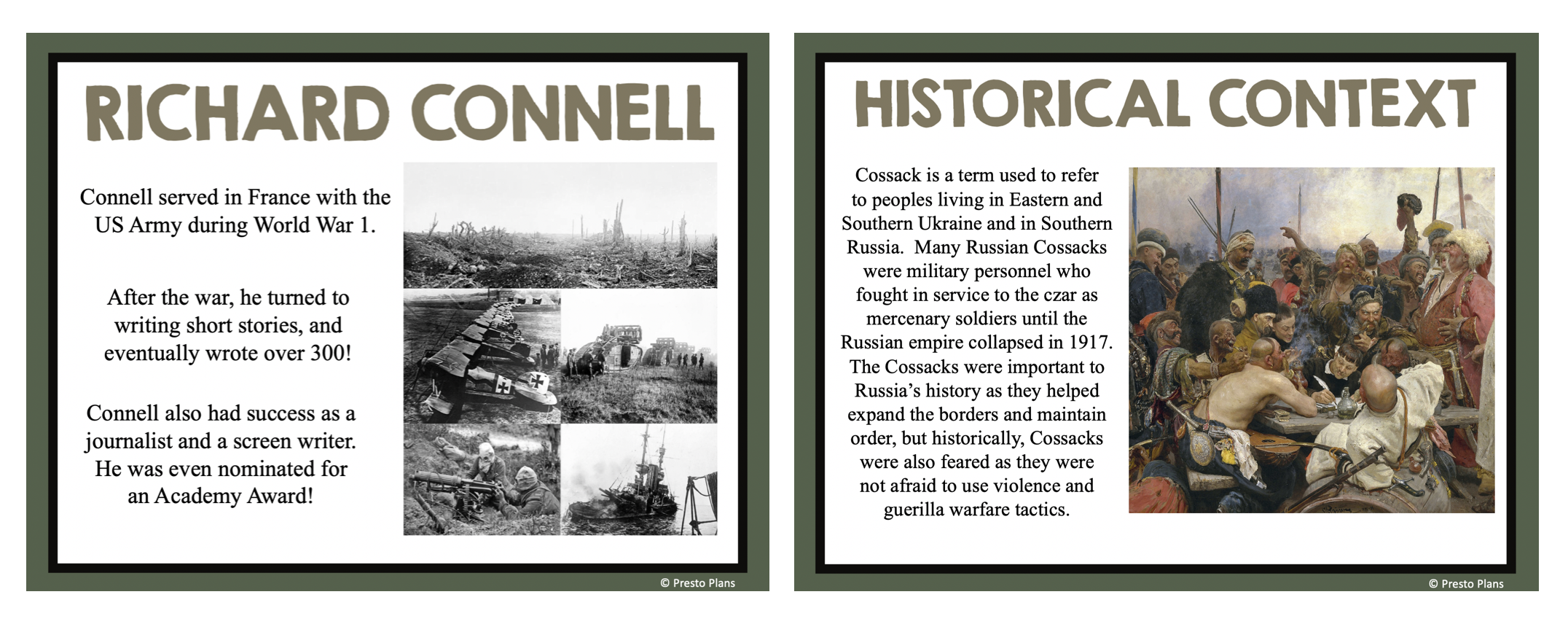
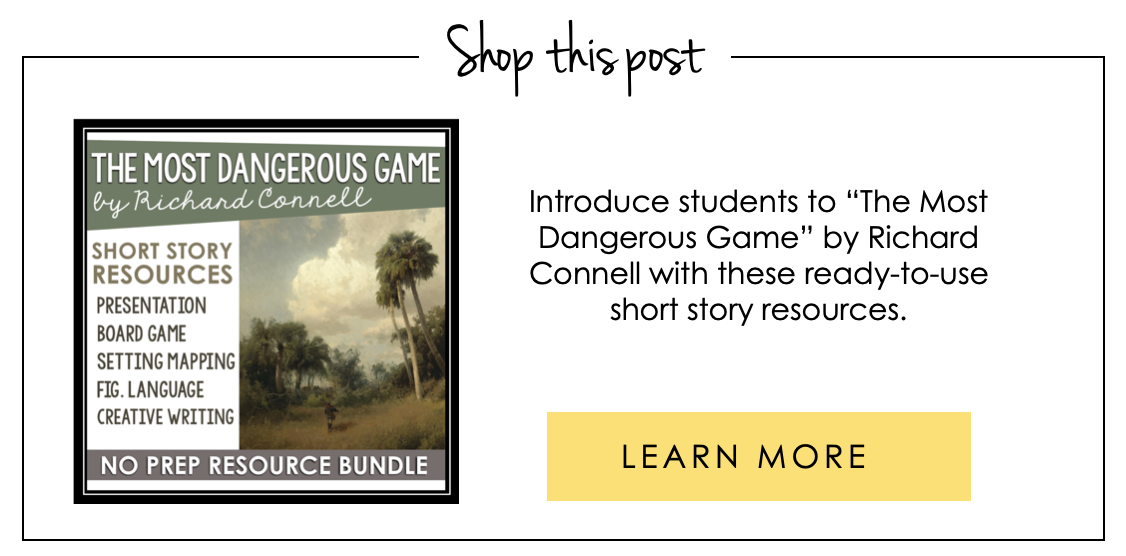
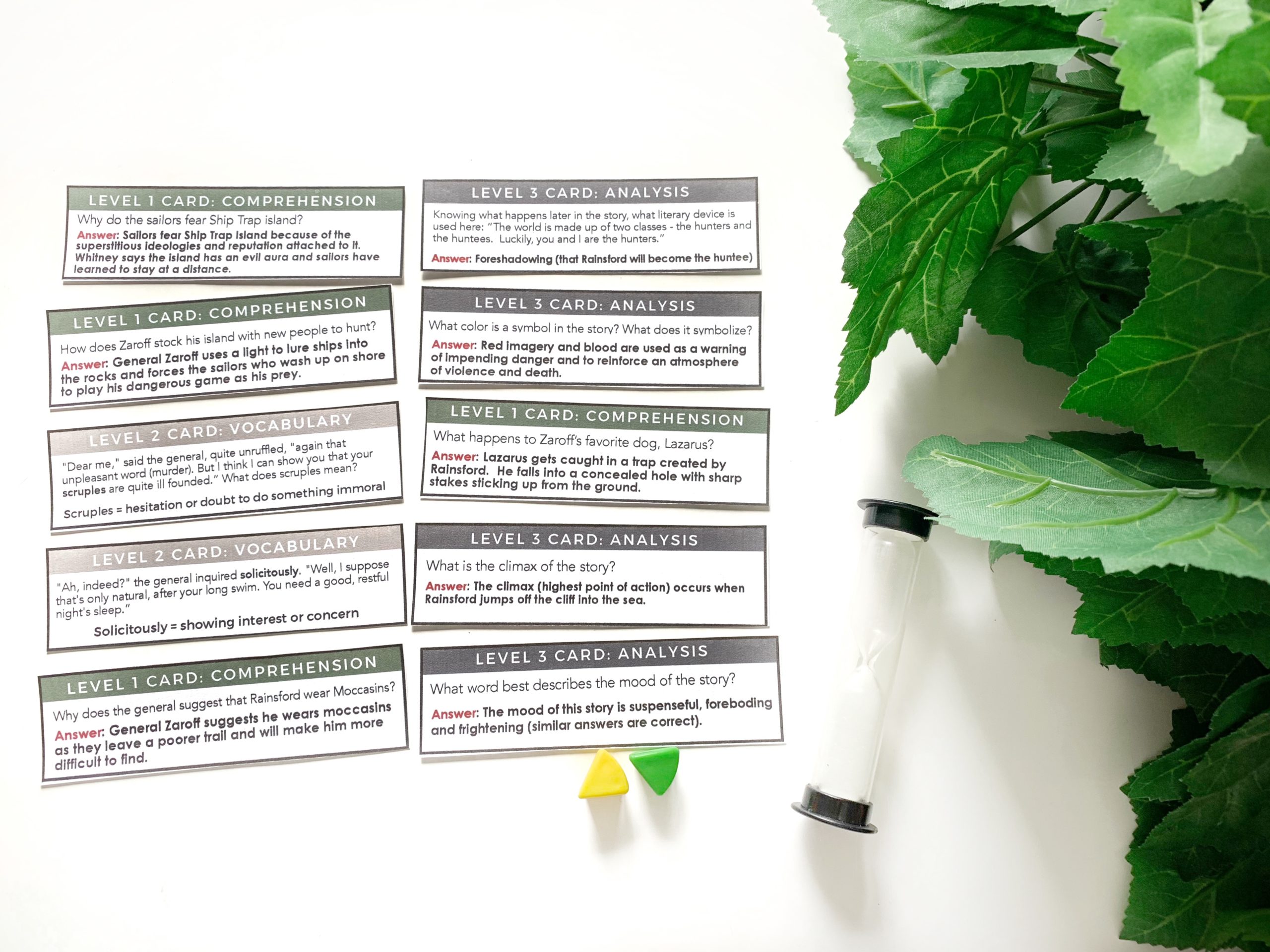
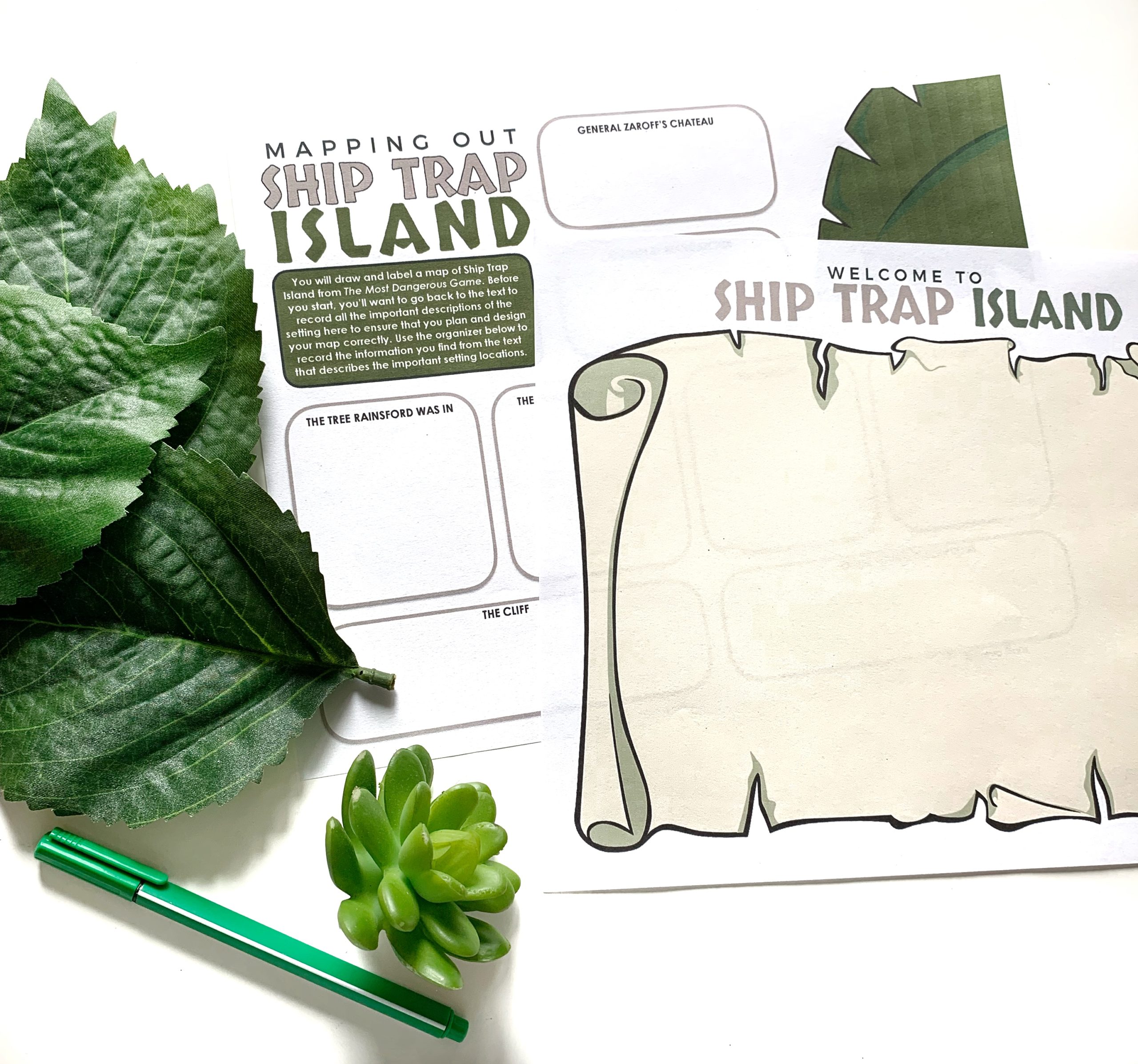
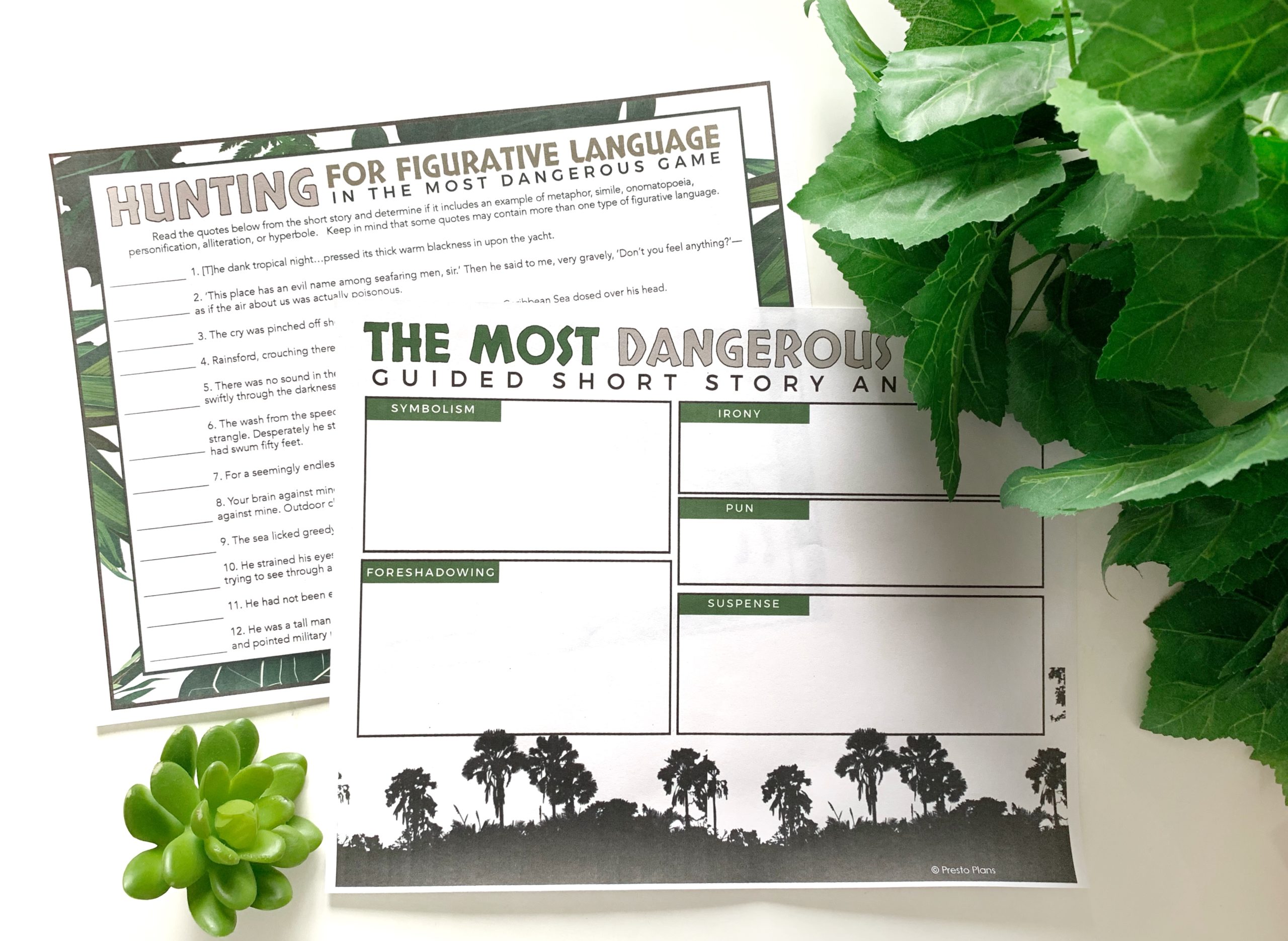

share this post